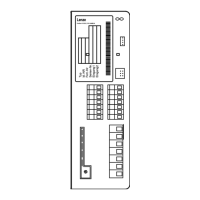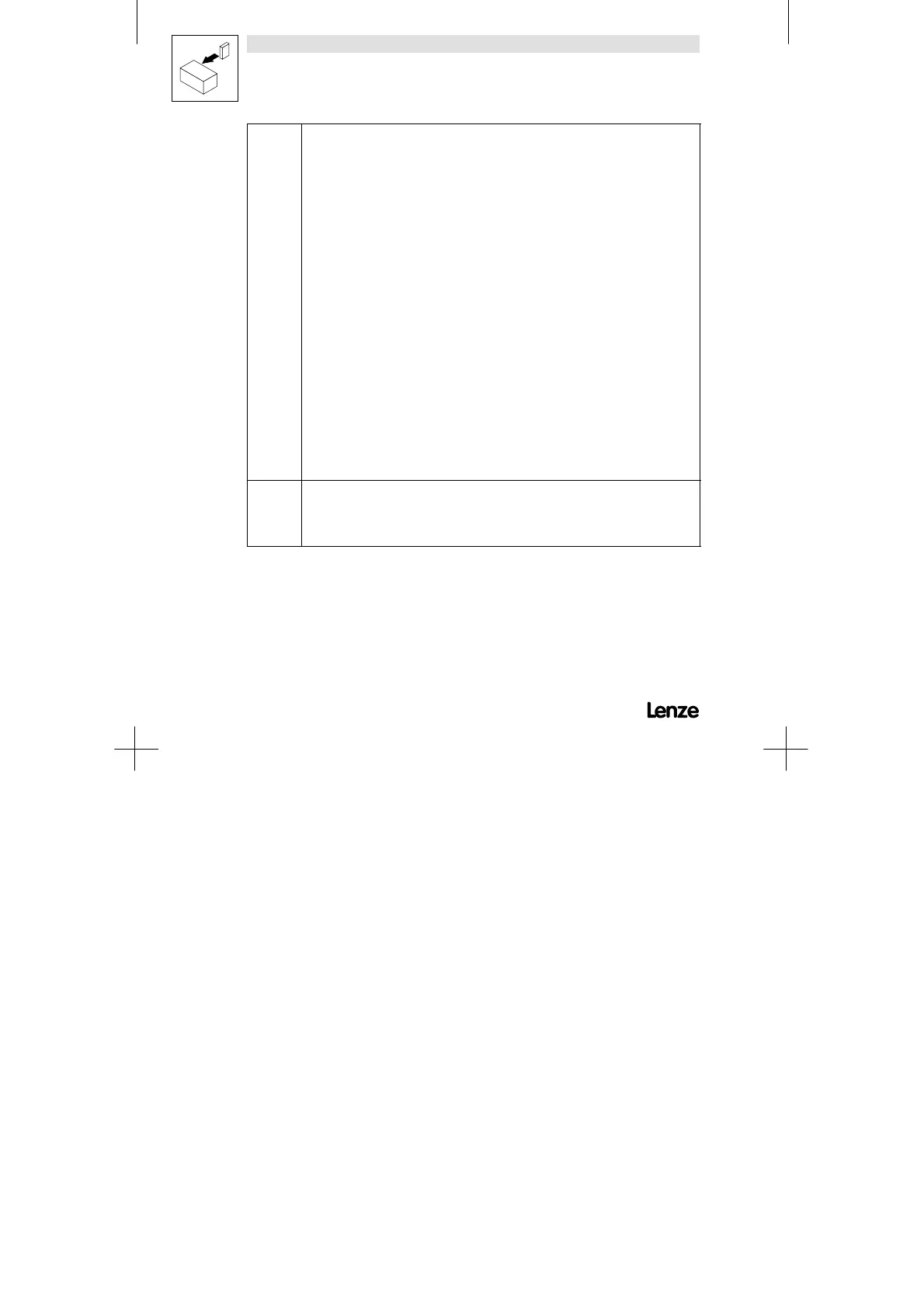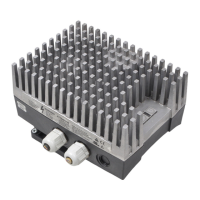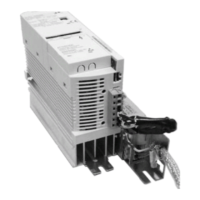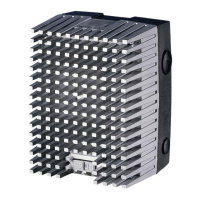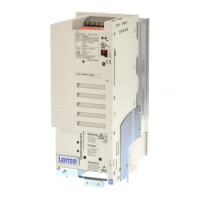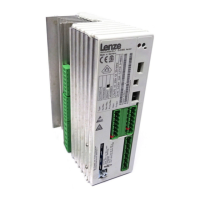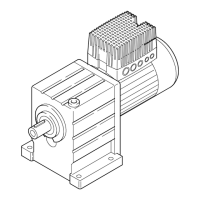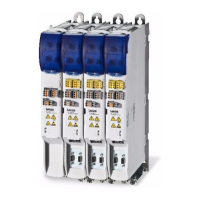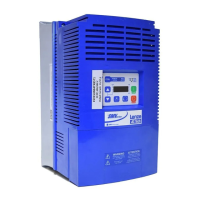Installation
4-14 UOMu_^MVMO
Screening D Connect the screen of the motor cable with the controller
- to the screen connection of the controller.
- additionally to the mounting plate with a surface as large as possible.
- Recommendation: For the connection, use ground clamps on bare metal mounting surfaces.
D If contactors, motor-protecting switches or terminals are located in the motor cable:
- Connect the screens of the connected cables also to the mounting plate, with a surface as large
as possible.
D Connect the screen to PE, with a surface as large as possible.
- Metal glands at the motor terminal box ensure a connection of the screen and the motor
housing.
D If the mains cable between mains filter and controller is longer than 300 mm:
- Screen mains cables.
- Connect the screen of the mains cable directly to the inverter and to the mains filter and connect
it to the mounti ng pla te with as large a surface as possible.
D Use of a brake chopper:
- Connect the screen of the brake resistor cable directly to the mounting plate, at the brake
chopper and the brake resistor with as large a surface as possible.
- Connect the screen of the cable between controller and brake chopper directly to the mounting
plate, at the inverter and the brake chopper with a surface as large as possible.
D Screen the control cables:
- Connect both screen ends of the digital control cables.
- Connect one screen end of the analog control cables.
- Always connect the screens to the screen connection at the controller over the shortest possible
distance.
D Application of the controllers 821X/822X/824X in residential areas:
- Use an additional screen damping
³ 10 dB to limit the radio interference. This is usually
achieved by installation in enclosed and grounded control cabinets made of metal.
Grounding D Ground all conductive metal components (controller, mains filter, motor filter, mains choke) using
suitable cables connected to a central point (PE bar).
D Maintain the minimum cross-sections prescribed in the safety regulations:
- For EMC, not the cable cross-section is i mportant, but the surface and the contact with a
cross-section as large as possible, i.e. large surface.
Artisan Technology Group - Quality Instrumentation ... Guaranteed | (888) 88-SOURCE | www.artisantg.com
